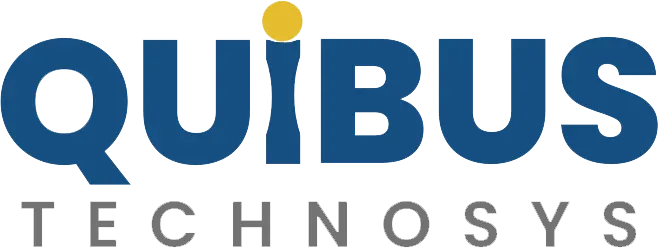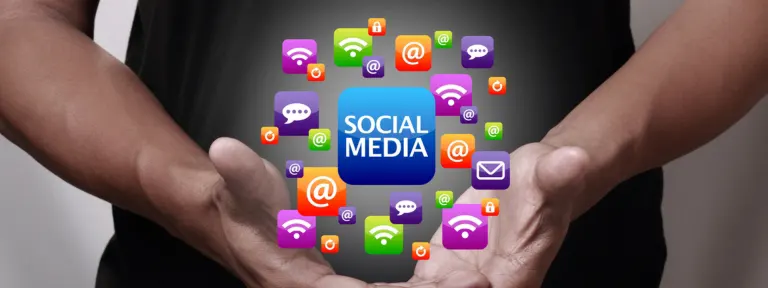The world in which we are living today has turned itself towards the digital age and is also growing rapidly. The total population of the world is around 7.9 billion and out of which 4.9 billion people (approximately 62% of the world population) use the Internet daily.
Due to the rapid growth of digital marketing, many businesses have implemented or are implementing digital marketing strategies to grow their business. Let’s dive deep into this article and learn more about Digital Marketing, Types of Digital Marketing, and why digital marketing is necessary for your business.
What is Digital Marketing?
Digital marketing is a form of marketing which you can use to advertise your product and services to your audience. Digital marketing support many channels like search engine, website, social media platforms, emails, and mobile marketing. By applying digital marketing to your business, you can engage, interact and understand your audience better.
What are the benefits of Digital Marketing?
Here are some benefits of digital marketing. To learn more, check out our article on the benefits of digital marketing:
- You can reach out to those looking for services, information or product related to your business.
- Digital marketing can help you engage with your audience at every stage.
- To improve your strategies, digital marketing gives you an opportunity to learn from the data you have gathered.
- If you are low on budget, you can set your own budget for your campaign goal.
Now you know what digital marketing is, let us take a look at the types of digital marketing:
10 Types of Digital Marketing
- Search Engine Optimization (SEO)
- Search Engine Marketing (SEM)
- Social Media Marketing
- Content Marketing
- Email Marketing
- Mobile Marketing
- Influencer Marketing
- Affiliate Marketing
- Video Marketing
- Virtual Reality & Augmented Reality Marketing
1. Search Engine Optimization (SEO)
The first and most used type of digital marketing is Search Engine Optimization or SEO. It is like the backbone of digital marketing; without optimizing your website for the search engine, you can not increase your business’s visibility or traffic.
SEO refers to the practice of improving your website’s or website’s pages to rank higher in the SERP. The main reason for applying SEO techniques is to boost the rank of your website/pages to get more organic traffic.
Another important thing is conducting keyword research. Conducting a proper keyword about your niche will increase the chance of your website to appears whenever someone searches term related to your niche.
Now let’s take a look at the types of SEO in digital marketing:
- On-Page SEO
On-Page SEO involves optimizing title tags, meta descriptions, headlines & headings, content, HTML code, URL optimization and Internal linking. If you want to rank your website or a page at the first position in the SERP, doing an on-page of that particular page is important.
- Off-Page SEO
Off-page refers to all the optimization efforts that you do outside your website. Off-page SEO involves backlinks, brand signals, and brand promotion.
- Technical SEO
Technical SEO consists of various elements like crawl ability, indexing, hreflang, mobile friendliness, crawl depth, duplicate content, and page speed. Technical SEO is specifically based on optimising the backend elements. To improve user experience and improve the website’s speed and usability across all types of devices.
Pros
- SEO is Cost-efficient.
- With the help of SEO, you can increase your brand awareness.
Cons
- SEO is a time taking process.
- Google constantly keep on updating its algorithm. Because of this, it is sometimes difficult to rank.
2. Search Engine Marketing (SEM)
With the help of search engine marketing (SEM), you can get in front of your audience. Search engine marketing refers to increasing the visibility of a product or service your brand is offering in the SERP (search engine result page) by paying a fee.
The fee you pay is not for appearing on the search engine result page; instead, you will be charged when your ad is clicked, also known as Pay-per-click. (PPC) aka pay-per-click is a form of advertising in which you will have to pay a fee only when your ad is clicked. SEM also allows you to optimize your ad copy by analyzing data so that you can improve your ads and get more visitors.
Pros
- The fastest way to appear in the SERP.
- You can optimize your ads based on users’ actions.
Cons
- Competition is very high.
- High cost.
3. Social Media Marketing
Social Media Marketing is a process of leveraging social media channels to advertise your business’s products and services. You can run paid campaigns on social media to divert traffic to your website. You can run ads on platforms like Twitter, LinkedIn, Facebook and Instagram. You can also target the audience based on location, interest, age and gender.
Social media gives you the flexibility to run campaigns according to your business objectives, like whether you want to improve your brand’s awareness or if you want to generate more leads. Social media also gives you the potential to remarket.
The main motive for using social media marketing is to increase the brand’s exposure and increase your brand’s reach.
Pros
- You can broaden your business’s reach.
- Target audience based on demographics.
- It is fast and convenient.
Cons
- It’s a time-consuming process.
- Negative comments can damage the brand’s image.
4. Content Marketing
Content Marketing is a strategy or a strategic approach which includes creating and distributing highly valuable and relevant content with full consistency in order to attract an audience. While producing content for marketing, you should keep in mind the niche or topic of your content; it should be relevant or suitable.
Choosing the right platform for distributing content also plays an important role. For example- If you are producing video content, the best suitable platform for distributing this type of content will be Youtube. Similarly, if you are writing a blog, the best place for publishing this type of content is a website.
Content marketing is all about producing relevant content keeping in mind your target audience, and choosing the suitable platform for publishing.
Pros
- Producing relevant and high-valued content will help engage the audience.
- Help in building brand awareness.
Cons
- High competition
- Difficulties in finding content ideas.
5. Email Marketing
The process of promoting your brand’s product and services using emails is known as Email Marketing. Using emails for marketing your product and services, you can precisely engage with your audience. You can not convert your subscriber by directly sending them a sales email. To take your subscriber to the conversion stage, you have to nurture them.
Is email marketing dead? No, email marketing is not dead; it is dead for those who do spamming of emails. According to a survey, the active number of email users is 4.2 billion and on average, around 347.3 billion emails are sent and received every day. Another advantage of using email marketing is you can generate an ROI of $42 on every single dollar spent.
Email marketing is a lengthy and time taking process. If you want to make email marketing an easy and simple process, you can take the help of email marketing tools. These tools grant access to many useful features like automation, scheduling and many more.
Pros
- Many Email marketing tools provide email testing. You can compare two sets of emails and test them before sending them.
- Using email marketing as a method of promotion, you can generate better ROI.
Cons
- Undelivered Email because of poor design.
- Your email can land in the spam folder.
6. Mobile Marketing
Mobile Marketing is a technique of reaching out to your audience via mobile phones by sending SMS, emails, and notifications from mobile apps, social media platforms and other sources. If done properly, mobile marketing can be very effective for your business, and you can reach your audience no matter where they are and convey personalised messages.
Around 86% of the global population uses mobile phones. People use mobile devices more than anything. People use smartphones to watch videos, read content, and ask questions. Basically, if you have a mobile phone and internet connection, you can do anything and anywhere online.
On average, people spend 4 to 5 hours daily on mobile devices surfing social media platforms, mobile apps and other things. You can make a profit from this and can get closer to your target audience.
Pros
- You can reach people where they spend most of their time.
- Demographic base targeting.
Cons
- People usually don’t like interruptions while they are watching or communicating.
- Users generally ignore mobile advertising.
7. Influencer Marketing
Influencer marketing is a process in which a brand collaborate with an influencer to market its product and services with the main motive of increasing business sale and awareness or targeting demographics.
Influencer marketing is a combination of traditional and new marketing strategies; it combines the traditional strategy of celebrity commercials with the current content-driven marketing.
Pros.
- Help in increasing brand awareness.
- Help in reaching the target audience.
Cons
- Choosing the wrong influencer.
- Influences with fake followers.
8. Affiliate Marketing
Collaborating with a person or an organisation that will do the promotions of your product or services is known as an affiliate. Affiliates use different modes of promotions to promote your product and services, like on their own website, social media channels, blogs, youtube, and other online channels.
They get a commission when a conversion happens. Conversion can be trackable through a referral code.
9. Video Marketing
Video marketing is one of the most efficient and effective digital marketing strategies. Using video content to showcase your product will help the audience understand better about the product. According to a survey, most people prefer to watch a video instead of reading a whole article about a particular topic.
When we compare a video and a blog on the same topic, users find videos more entertaining and exciting than blog posts. The benefit of using video marketing is you can precisely explain all the features of the product and service you are offering.
You can share your content on Youtube and other social media channels to increase your content’s reach. Using these channels for promoting your product will help your brand build awareness.
Pros
- Using videos for marketing can get you more engagement than a blog.
- Videos are an attention grabber.
Cons
- It requires skills to create a video.
- It is not easy to create a video that everyone finds appealing.
10. Virtual Reality(VR) & Augmented Reality(AR) Marketing
Virtual Reality, or VR, is a completely fascinating experience that allows the user to interact with a new virtual world. By using virtual reality in your marketing campaigns, you can provide your audience with an immersive and in-depth experience of the product and service you are offering.
Augmented Reality (AR) is a technology you can use to bring virtual things into the real world.
The difference between AR & VR:
VR is a process in which you must wear glasses and then explore the virtual environment. Whereas AR is a process in which you can bring virtual environments and things into the real world using your phone’s camera. AR example: Snapchat camera, Lenskart.
Pros
- Using VR or AR in your marketing strategy can provide a mesmerizing experience.
Cons
- Health-related issues if used for a longer period.
When and How to Use Different Types of Marketing?
When it comes to marketing, selecting the right strategies based on your objectives and the people you want to reach is essential. Content marketing is an excellent option for establishing your brand’s credibility and earning trust by providing valuable information.
Social media marketing proves to be a powerful tool for captivating a diverse audience and cultivating a sense of community. Email marketing is effective for personalized communication and cultivating leads. Advertising through platforms like Google Ads can swiftly drive traffic and generate conversions. The choice depends on which type of business you are running and what strategy will work for you.
What Types of Digital Marketing are Best for Your Business?
The best type of digital marketing for business is determined by factors such as your industry, target audience and objectives. If your primary focus is on visual content and the art of storytelling, leveraging social media marketing and platforms such as Instagram could prove to be impactful.
If you are a B2B, content marketing and email campaigns are better suited for your needs. If you are an e-commerce business combining paid advertising, SEO, and email marketing can be advantageous.
To ensure the best digital marketing strategies for your business, it’s crucial to evaluate your specific requirements and available resources carefully.
Why is Digital Marketing necessary for businesses in 2023?
Digital Marketing is Important for businesses because by applying digital marketing strategies to your business, you can increase the reach of your business. Digital marketing makes your business easily accessible to your customers.
With the assistance of digital marketing, you can do targeted advertising. With digital marketing, you can target an audience based on age, gender, and location. You can also improve engagement by engaging with your audience at every stage. Last but not least, it can also help you improve your brand awareness.
If you want to learn the types of digital marketing and how to do digital marketing, you can check out this digital marketing course in Jaipur by Quibus trainings.
FAQ
What are the types of digital marketing?
Search Engine Optimization (SEO), Search Engine Marketing (SEM), Social Media Marketing, Content Marketing, Email Marketing, Mobile Marketing, Influencer Marketing, Affiliate Marketing, Video Marketing, Virtual Reality & Augmented Reality Marketing.
How many types of digital marketing?
There are 7 main types of digital marketing:
SEO, SEM, Social Media Marketing, Content Marketing, Email Marketing, Mobile Marketing, and Influencer Marketing.




